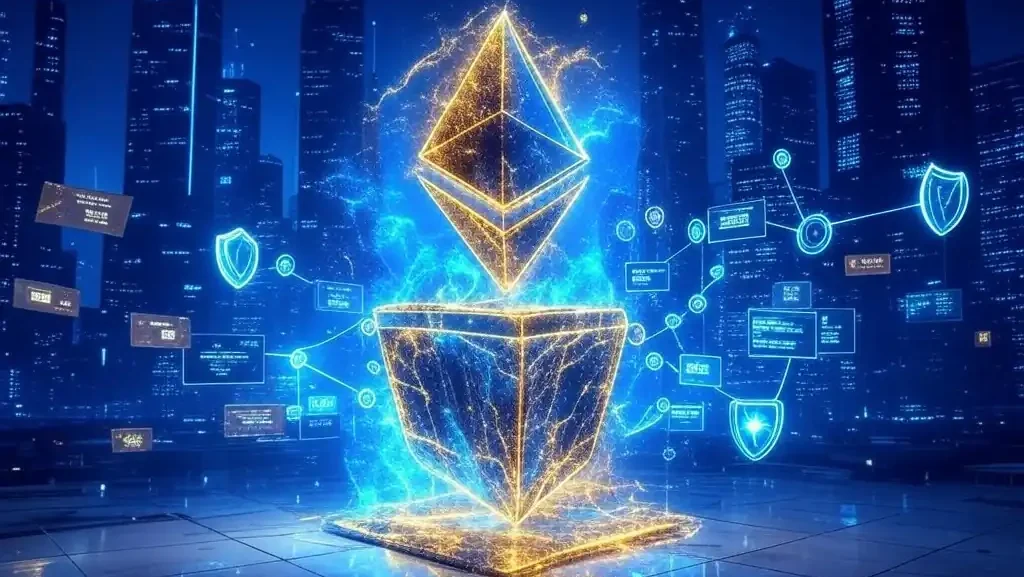Smart Contract Functionality: The Power of Programmable Blockchain

Smart contracts represent one of the most revolutionary aspects of blockchain technology, transforming static ledgers into dynamic, programmable platforms. For anyone looking to understand Ethereum and modern blockchain applications, grasping how smart contracts function is essential. This comprehensive guide explores the mechanics, capabilities, and implications of this groundbreaking technology.
What Are Smart Contracts?
Smart contracts are self-executing programs stored on a blockchain that run when predetermined conditions are met. Unlike traditional contracts that require trusted intermediaries to enforce terms, smart contracts enforce agreements automatically through code. The term "smart contract" was coined by computer scientist and legal scholar Nick Szabo in the 1990s, long before blockchain technology existed. Szabo envisioned digital protocols that could enforce contractual clauses without human intermediaries. While Bitcoin implemented limited programmability, Ethereum brought Szabo’s concept to full fruition.
Key Characteristics of Smart Contracts
Smart contracts possess several distinctive features:
- Deterministic: Given the same input, they always produce the same output
- Immutable: Once deployed, their code cannot be changed (unless specifically designed with upgrade patterns)
- Transparent: Their code and execution are visible to all network participants
- Trustless: They execute automatically without requiring trust in any counterparty
- Permissionless: Anyone can create and deploy them without seeking approval
How Smart Contracts Work on Ethereum
Ethereum’s smart contracts operate on a deeper technical level than most users realize.
The Contract Lifecycle
A smart contract goes through several stages:
- Development: Developers write contract code in languages like Solidity or Vyper
- Compilation: The high-level code is compiled into EVM bytecode
- Deployment: The bytecode is submitted to the network in a special transaction
- Storage: The contract receives a unique address and its code is stored on the blockchain
- Execution: The contract runs when triggered by transactions or other contracts
- Interaction: Users and other contracts interact with it by sending transactions
Contract State Management
Smart contracts manage their state in several ways:
- Storage: Permanent data that persists between function calls
- Memory: Temporary data that exists only during function execution
- Stack: Working area for simple operations during execution
- Call Data: Input parameters passed to the contract
Smart Contract Capabilities and Limitations
Understanding what smart contracts can and cannot do helps set realistic expectations for their applications.
What Smart Contracts Can Do
- Store and Transfer Value: Manage cryptocurrency and token balances
- Maintain State: Keep track of information over time
- Enforce Rules: Automatically execute predefined conditions
- Interact with Other Contracts: Call functions in other contracts, enabling composability
- Emit Events: Signal important occurrences to external systems
- Execute Complex Logic: Implement sophisticated business rules
What Smart Contracts Cannot Do
- Access External Data Directly: Cannot pull data from outside the blockchain without oracles
- Generate True Randomness: Cannot create genuine randomness without external sources
- Execute Secretively: All code and data is visible to network participants
- Perform Heavy Computation: Gas limits restrict computational complexity
- Self-Execute: Need to be triggered by external transactions
Key Concepts in Smart Contract Design
Several important concepts shape how smart contracts function: Oracles Oracles are services that connect smart contracts with real-world data, enabling contracts to react to external events. Types include:
- Data Oracles: Provide information like price feeds or weather data
- Computation Oracles: Perform complex computations off-chain
- Event Oracles: Notify contracts about real-world events
- Gas-Efficient Patterns: Designing contracts to minimize gas consumption
- Storage Optimization: Packing data to reduce storage costs
- Batching Operations: Combining multiple operations to share fixed costs
- Proxy Patterns: Using a proxy contract that delegates calls to an implementation contract
- Data Separation: Storing data and logic in separate contracts
- Eternal Storage: Using a dedicated storage contract that persists across logic upgrades
Common Smart Contract Applications
Smart contracts power a vast ecosystem of decentralized applications across numerous domains.
Financial Applications
The largest sector of smart contract usage is in Decentralized Finance (DeFi):
- Token Exchanges: Automated market makers like Uniswap
- Lending Protocols: Collateralized lending platforms like Aave or Compound
- Derivatives: Synthetic assets and options protocols
- Stablecoins: Algorithmic stablecoins like DAI
- Insurance: Automated parametric insurance products
Non-Financial Applications
Beyond finance, smart contracts enable:
- Digital Identity: Self-sovereign identity systems
- Supply Chain Tracking: Product provenance and verification
- Governance: Decentralized autonomous organizations (DAOs)
- Gaming: On-chain game mechanics and digital ownership
- Content Distribution: Decentralized media platforms with direct monetization
Smart Contract Security and Best Practices
Security is paramount in smart contract development due to the immutable and financial nature of these systems.
Common Security Vulnerabilities
Several types of vulnerabilities frequently appear in smart contracts:
- Reentrancy: When a contract calls an external contract before resolving its own state
- Integer Overflow/Underflow: Mathematical operations exceeding variable size limits
- Access Control Issues: Insufficient protection of privileged functions
- Front-Running: Transaction ordering exploitation
- Logic Errors: Flawed business logic implementation
Security Best Practices
To mitigate these risks, developers should follow established practices:
- Code Audits: Have code professionally reviewed by security experts
- Formal Verification: Mathematically prove contract properties
- Extensive Testing: Test all edge cases and scenarios
- Use Proven Libraries: Leverage audited, community-vetted code like OpenZeppelin
- Security Monitoring: Continuously monitor deployed contracts for suspicious activity
- Gradual Rollout: Deploy with value limits that increase over time
The Evolution of Smart Contract Platforms
While Ethereum pioneered practical smart contracts, the ecosystem has evolved significantly.
Ethereum Improvements
Ethereum itself has enhanced smart contract capabilities through several upgrades:
- Byzantium: Added cryptographic primitives and reduced gas costs
- Constantinople/Petersburg: Optimized certain operations
- Istanbul: Improved gas efficiency for common operations
- Berlin: Added new EVM features and gas cost adjustments
- London: Introduced a new fee market model affecting contract economics
Beyond Ethereum
Other platforms have introduced innovative approaches to smart contracts:
- Solana: High-performance contracts with different programming models
- Polkadot: Specialized runtime environments for different use cases
- Cosmos: Inter-blockchain communication for cross-chain contracts
- Algorand: Smart contracts with formal verification built-in
Developing Smart Contracts
For those interested in creating smart contracts, several steps are involved in the development process.
Development Tools
The Ethereum ecosystem offers numerous development tools:
- Remix: Browser-based IDE for quick development
- Hardhat and Truffle: Development frameworks with testing capabilities
- OpenZeppelin: Libraries of secure contract components
- Ethers.js and Web3.js: JavaScript libraries for contract interaction
Development Workflow
A typical development workflow includes:
- Design: Define contract specifications and interactions
- Implementation: Write the contract code
- Local Testing: Test on a local development environment
- Testnet Deployment: Deploy to a test network like Goerli or Sepolia
- Auditing: Have the code professionally audited
- Mainnet Deployment: Deploy to the production network
- Monitoring and Maintenance: Track contract performance and issues
The Future of Smart Contracts
Smart contract technology continues to evolve rapidly, with several emerging trends:
Privacy Solutions
Innovations in zero-knowledge proofs and other privacy technologies are enabling confidential smart contracts that maintain privacy while preserving verifiability.
Cross-Chain Functionality
Projects working on interoperability protocols aim to enable smart contracts that can operate across multiple blockchains.
Regulation and Legal Recognition
As smart contracts gain mainstream adoption, legal frameworks are beginning to recognize their validity, with some jurisdictions updating laws to accommodate this new technology.
Conclusion
Smart contracts represent a paradigm shift in how agreements can be created, executed, and enforced. By removing intermediaries and automating execution, they reduce costs, increase efficiency, and enable entirely new types of applications. While challenges remain in areas like security, scalability, and legal frameworks, the technology continues to mature at a rapid pace. For developers, businesses, and users alike, understanding smart contract functionality provides crucial insight into the transformative potential of blockchain technology. As the space evolves, smart contracts will likely become an increasingly integral part of digital infrastructure, powering everything from financial services to supply chains to digital identity systems—all with unprecedented transparency, efficiency, and trust minimization.


